For the Solopreneur running a Lean Startup, the fundamental mission is clear: maximize the speed of the Build-Measure-Learn feedback loop while conserving precious capital. Every day spent writing boilerplate code is a day not spent talking to customers and validating a core hypothesis.
The bottleneck has always been the Build phase. Traditionally, moving from an idea to a minimally functional web application (with user accounts, a database, and basic CRUD operations) could easily take a technical founder one to three weeks. For the non-technical founder, this delay was often fatal, requiring expensive agency quotes or months spent learning a complex visual platform.
The new category of AI-Native Builders has changed this equation forever. They introduce "Vibe Coding"—the ability to describe the app's purpose, its desired aesthetic, and its functional requirements in natural language, and have the AI agent instantly generate the entire scaffolding. This moves past simple code suggestions (like Copilot) to a complete, functional prototype in minutes.
Platforms like Lovable, Bolt.new, and Vercel’s v0 promise instantaneous creation. This is, without question, the fastest path to getting a functional Proof-of-Concept Demo in front of a potential customer or investor.
However, this unprecedented velocity comes with the most significant architectural risk in modern development: the AI Black Box. For the founder focused on long-term scalability and financial sustainability, understanding the trade-off between the instant creation speed of these tools and the long-term maintainability of the generated code is the difference between a successful launch and an expensive, premature rewrite.
The Spectrum of AI Builders – Control vs. Velocity
AI-powered development tools for startups fall into two distinct strategic categories, defined by the level of control they give the human founder over the generated code.
Agentic Builders: High Speed, Low Control (The Black Box Risk)
These tools operate under the philosophy of maximal autonomy. The AI agent takes the prompt and attempts to deliver the complete solution, managing the full stack (frontend, backend, database) with minimal human intervention.
Examples: Lovable, Bolt.new, Base44, and Vercel’s v0 (focused primarily on generating highly polished components).
How They Work: You provide a prompt like: "Create a curated directory of fitness trainers with user ratings, a searchable map view, and a Stripe payment gateway." The AI attempts to assemble the full-stack solution—frontend, database model, and API connections—in seconds.
Best Use Case: Validation Speed. The optimal use is creating a stunning Proof-of-Concept Demo or a high-fidelity prototype designed only to gather immediate customer feedback on features, pricing, and messaging. They are perfect for testing product viability before committing to a stable architecture.
The Strategic Trap: Instant Technical Debt
The core danger of Agentic Builders is the AI Black Box. Because the AI structures the code, database queries, and component relationships automatically, the underlying architecture is often opaque, convoluted, and over-engineered for the actual task.
Uninspectable Logic: When a critical bug occurs (e.g., "Why is the user seeing the wrong price after a subscription change?"), debugging becomes a nightmare. You are essentially debugging the AI’s complex, proprietary thought process, not a standard, readable file structure. This converts an hour-long fix into a day of frustration—killing the velocity gained upfront.
Hidden Performance Debt: The generated code is optimized for completeness, not efficiency. As your data scales, those instant-MVP database queries often become massive, slow, and expensive operations. This leads to unexpected consumption-based pricing spikes—a high Total Cost of Ownership (TCO) that can financially cripple a lean business model just as it starts to gain traction.
Vendor Lock-in: The AI often relies on proprietary APIs, specific hosting environments, or complex internal mechanisms that bind you tightly to that platform. Since the output artifacts are not guaranteed to be clean, standard code (like a Git repo of clean React files), migration becomes virtually impossible.
The Solopreneur’s Dilemma: When the AI-built app gets its first 1,000 production users, the time spent debugging and managing the AI's architectural mess can force an expensive, complete rewrite—the exact cost the Lean approach tries to avoid.
AI-Native IDEs: High Control, Developer Augmentation (The Smart Partner)
These platforms shift the focus from replacement to augmentation. They do not create the application autonomously; they integrate powerful AI assistants directly into a familiar, production-ready coding environment, preserving human control.
Examples: Replit (with Ghostwriter), Cursor, and advanced integrations of LLMs into traditional development editors.
How They Work: These environments augment the traditional coding workflow. The founder retains full manual control over every line of code, but the AI is present to execute high-leverage, time-consuming tasks:
Generating boilerplate functions and initial file structure.
Writing comprehensive unit tests for existing code (the highest leverage task).
Debugging errors with context-aware suggestions across the entire codebase.
Refactoring code patterns on demand (e.g., converting callbacks to promises).
Best Use Case: Production Velocity and Stability. Replit is the key platform here, offering a cloud IDE that supports 50+ languages, integrated hosting, and database solutions. This is for the technical Solopreneur who wants AI speed but needs to retain code ownership and ensure a scalable, portable architectural foundation.
The Strategic Advantage: Code Ownership and Portability
For the founder prioritizing long-term stability and financial safety, this model is superior:
Zero Vendor Lock-in (Portability): The code generated is standard Python, JavaScript, or whatever language you choose. It can be immediately pulled down via Git and deployed anywhere—a critical insurance policy against platform changes.
Maintainability: The human founder dictates the architecture (clean separation of concerns, proper component naming). The AI merely accelerates the typing and debugging process within that established, clean structure, making the codebase easy to onboard new engineers onto later.
Maximal Debugging Efficiency: Since the code is clean and human-directed, the debugging process is simplified. Tools like Cursor can instantly analyze a bug in the context of the entire file system, converting hours of context-switching into seconds of clarity.
The Strategic AI Playbook for the Lean Founder
The true power of AI for the Lean founder lies not in choosing one platform, but in using the right tool for the right phase of the Build-Measure-Learn cycle. You must separate the Validation phase (where speed is the only metric) from the Production phase (where quality and control are the only metrics).
Phase 1: The Validation Sprint (Weeks 1-4)
Goal: Test the core assumption: "Do people want to pay for this solution?"
Tool of Choice: Agentic Builders (v0, Bolt.new, Lovable).
Action: Use these tools to generate a hyper-polished, front-end heavy prototype in hours. Connect it to a dummy database or a simple Google Sheet.
Focus: User Interface (UI) and Workflow. Does the UX make sense? Is the proposed feature set confusing? Get pricing feedback.
The Crucial Rule: Treat the Generated Code as Disposable. It is a high-fidelity mockup. Do not use the AI-generated backend for storing mission-critical customer data or processing real payments. Use it only for validation; this prevents the initial speed from creating instant, unmanageable technical debt.
Phase 2: The Production Build (Weeks 5+)
Goal: Build the mission-critical, stable backend and scale the validated features.
Tool of Choice: AI-Native IDEs (Replit/Cursor) OR Visual Full-Stack (Bubble/FlutterFlow).
Action (Technical Founder): Move to Replit. Use the validated feature set from Phase 1 as a blueprint, and build the architecture from scratch, using the AI assistant (Ghostwriter) to write repetitive code, unit tests, and robust API handlers.
Action (Non-Technical Founder): Move to Bubble or FlutterFlow. Use the validated feature set and build the logic using the visual programming language, which is fully transparent and controllable.
Focus: Architecture, Data Integrity, and TCO. Ensure every database query is efficient and every function is clearly defined. This is where you prioritize long-term performance over initial speed.
This dual-tool strategy maximizes the benefits while mitigating the "Black Box" risk:
$$\text{AI (Agentic) for Validation Speed} + \text{AI (IDE) for Code Quality} = \text{Sustainable Lean Velocity}$$
The Hidden Cost of "Free" Code – TCO and Funding
A founder must rigorously evaluate the Total Cost of Ownership (TCO) of an AI-built application. The initial price tag and speed can be incredibly misleading.
The Cost of LLM Usage and Consumption
Many cutting-edge AI scaffolding tools (especially those using the latest, most powerful models) may rely on an underlying usage model tied to the large language model API calls.
The Problem: If your app's core functionality relies on frequent, complex queries that trigger expensive LLM calls (e.g., an AI-powered search filter, content generation on demand), your hosting bill can escalate rapidly and unpredictably. You risk being hit by a massive, unplanned consumption charge.
The Lean Defense: Favor platforms with predictable subscription pricing (like Replit's fixed tiers or Bubble’s subscription plans) over models that rely heavily on consumption-based LLM API calls for core, repetitive features. Predictability is paramount for budget control.
The Cost of Technical Debt (The Rewrite Tax)
This is the most significant financial risk associated with Agentic Builders. A seemingly "free" or "cheap" MVP built by a black-box agent that breaks or performs poorly at scale can easily require a $50,000 to $100,000 emergency contract developer rewrite just to make the application functional and scalable.
The Lean Defense: This financial disaster directly violates the principle of capital preservation. Invest slightly more time upfront in a transparent architecture (Replit or a visually clear platform like FlutterFlow) to save a massive, business-ending expenditure later.
The Investor Due Diligence Filter
When you raise your first round of funding, investors and the first technical lead (future CTO) will perform due diligence on your code.
Agentic Black Box Code: If the application is built on unportable, convoluted, or undocumented proprietary architecture, it signals high execution risk and immediately forces a valuation discount. The investor knows they will have to budget for an immediate, full rewrite.
AI-IDE Code: A codebase built on standard frameworks (React, Python, etc.), stored in Git, and accelerated by AI, shows architectural maturity. It demonstrates that the founder prioritized longevity and maintainability. This code is considered a clean asset, significantly de-risking the technical investment and making the company more attractive to top engineering talent.
Tactical Use of AI-IDEs – The 10x Coder Playbook
For the technical founder using tools like Cursor and Replit, the focus should be on high-leverage tasks where AI provides the highest return on time invested:
Eliminating Context-Switching (Cursor)
Context-switching—the mental effort required to jump between debugging, writing new features, and understanding existing code—is the biggest drain on a Solopreneur's time.
Codebase Comprehension: Use Cursor's ability to "Ask a question about the codebase." Instead of manually searching through dozens of files, you ask: "Where is the Stripe payment webhook logic defined and what exceptions does it handle?" The AI instantly retrieves and summarizes the relevant code blocks. This converts 20 minutes of searching into 5 seconds of focused work.
The Power of Instant Testing (Replit/Cursor)
Manual unit testing is tedious, time-consuming, and often skipped by time-pressed founders, leading to production bugs.
Automated Testing: Ask the AI: "Write comprehensive unit tests for the entire UserAuthentication.js file." The AI instantly drafts high-quality, full-coverage tests. This investment in automated testing (which the AI makes free) de-risks every future deployment and dramatically speeds up the Measure phase.
Scaffolding Non-Differentiating Complexity
Use the AI to handle complexity that doesn't define your unique business value.
Infrastructure (DevOps): Ask the AI to write complex deployment scripts (e.g., "Write a bash script to build my React app, upload it to AWS S3, and set up a CloudFront distribution"). This eliminates the need for a dedicated DevOps engineer.
API Wrappers: When integrating with a third-party API (e.g., Twilio, QuickBooks), ask the AI to write the boilerplate request/response handling and error catching logic. This allows you to focus only on the business logic of what you do with the data, not how you retrieve it.
The Final Verdict: Controlled Speed is the Goal
AI-Native Builders have provided the Lean movement with an incredible gift: instant speed for validation. They are the perfect tool for creating a quick, high-fidelity demo to prove market demand.
However, the ultimate winner in the startup game is the one with the most sustainable velocity. That means pairing the initial Agentic speed with the architectural control provided by AI-Native IDEs like Replit and Cursor.
The winning founder uses the AI to write the boilerplate and the tests, but insists on defining the architecture and retaining ownership over every critical function. This ensures your MVP won't just launch quickly, but will be ready to scale when PMF hits, without the looming threat of the Black Box Rewrite Tax.
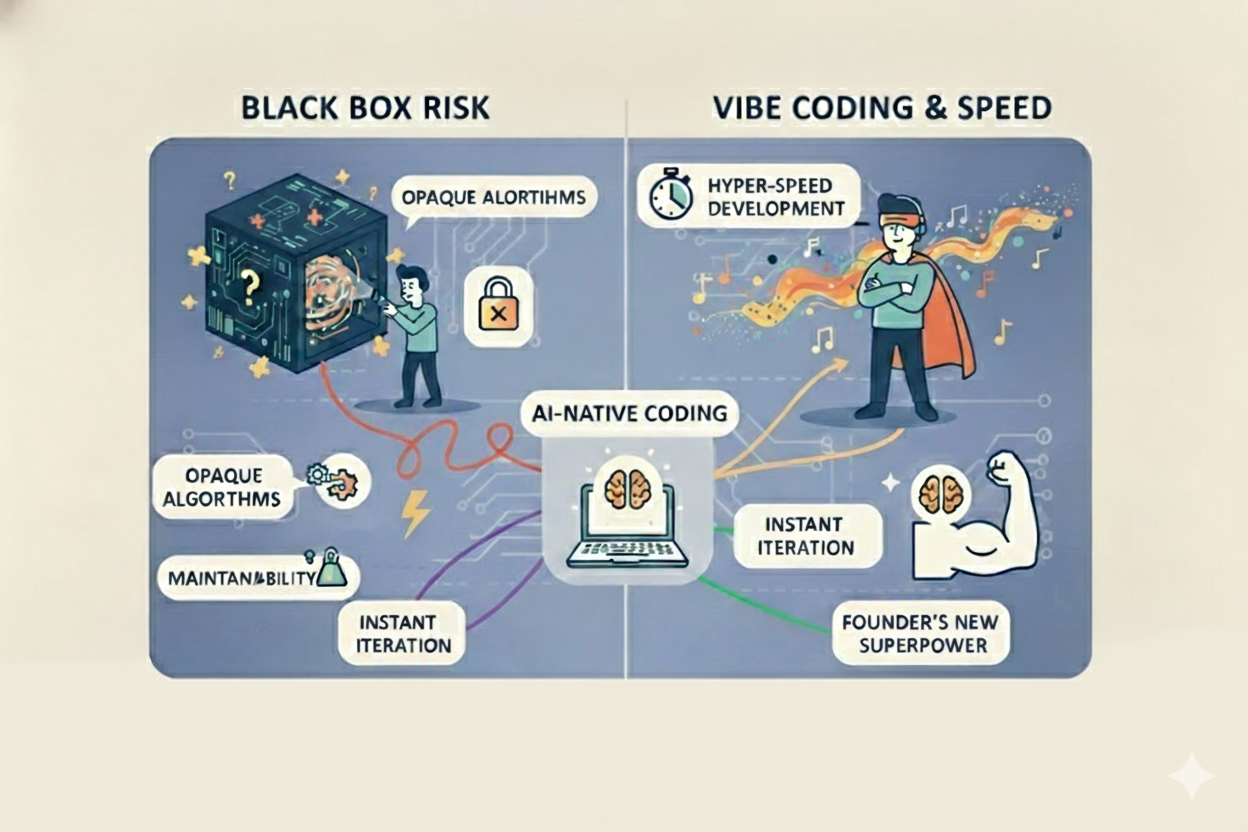
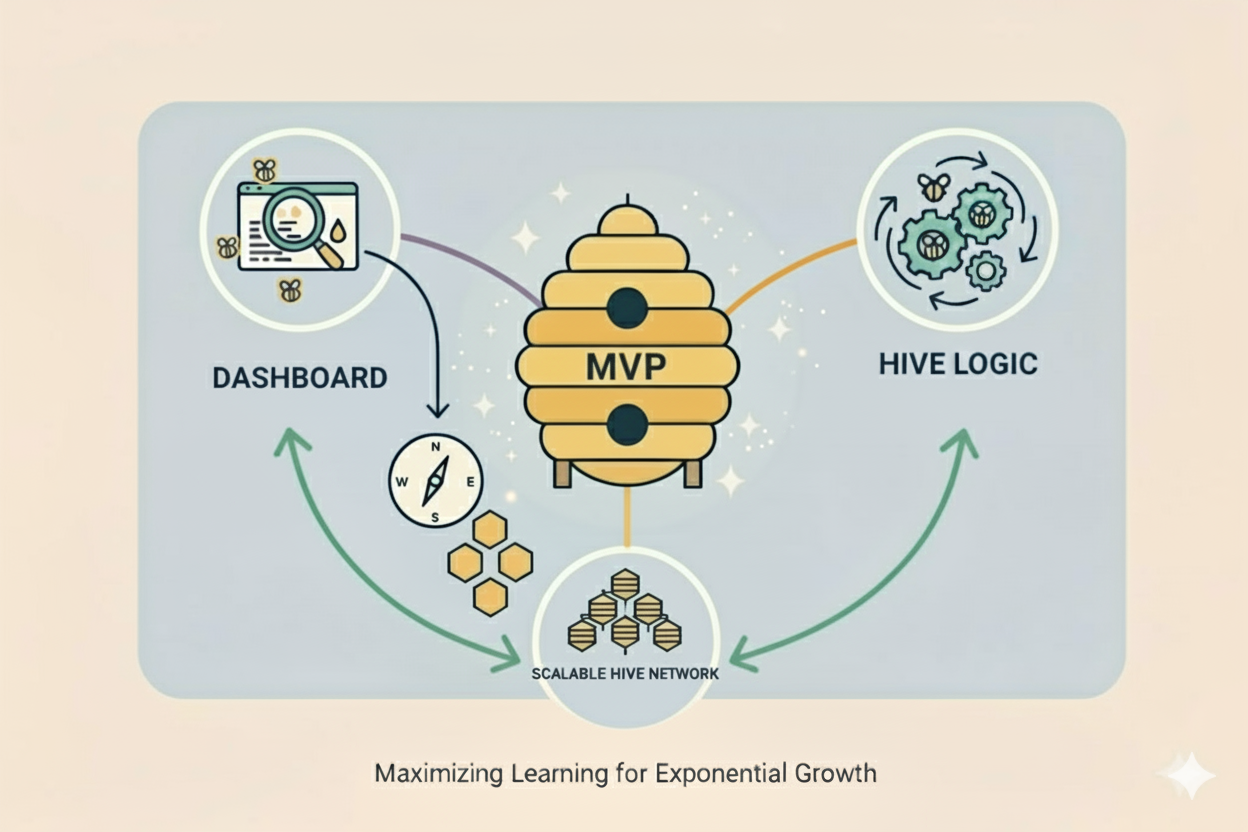
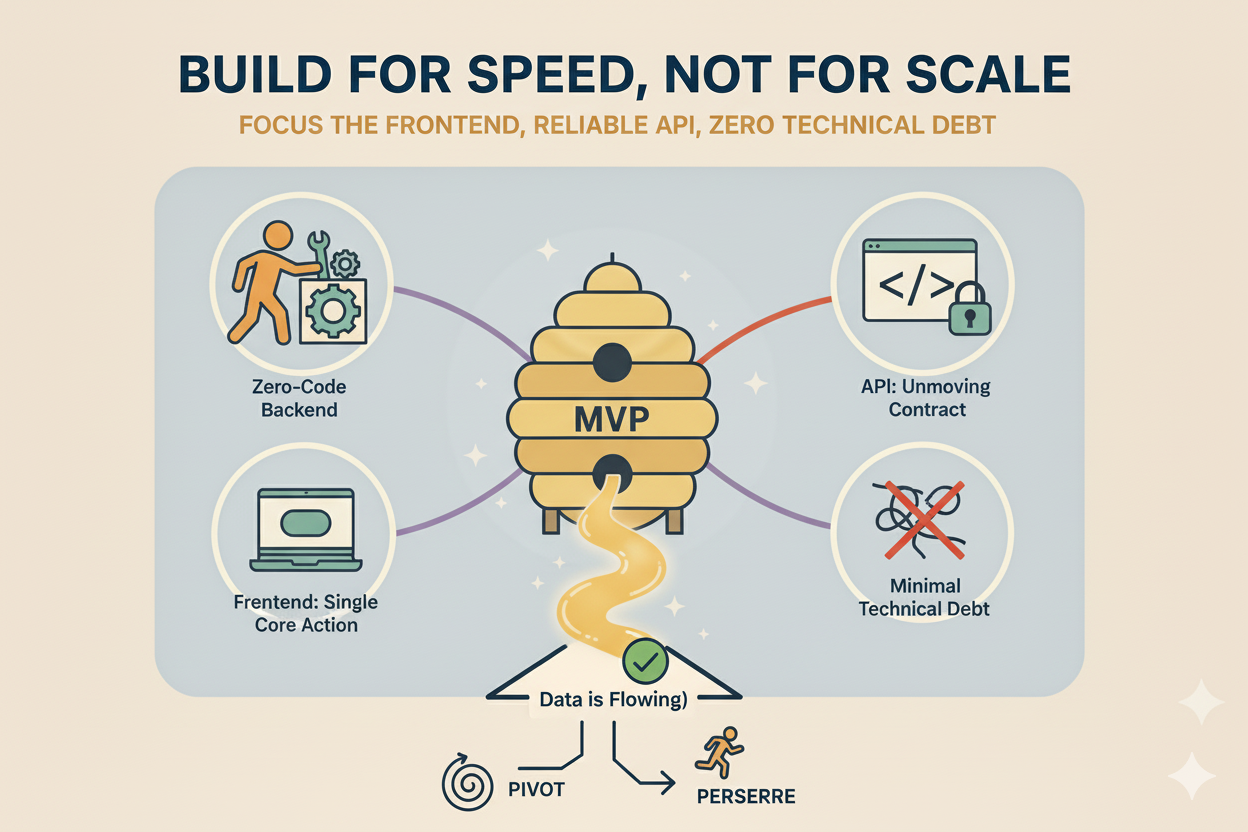
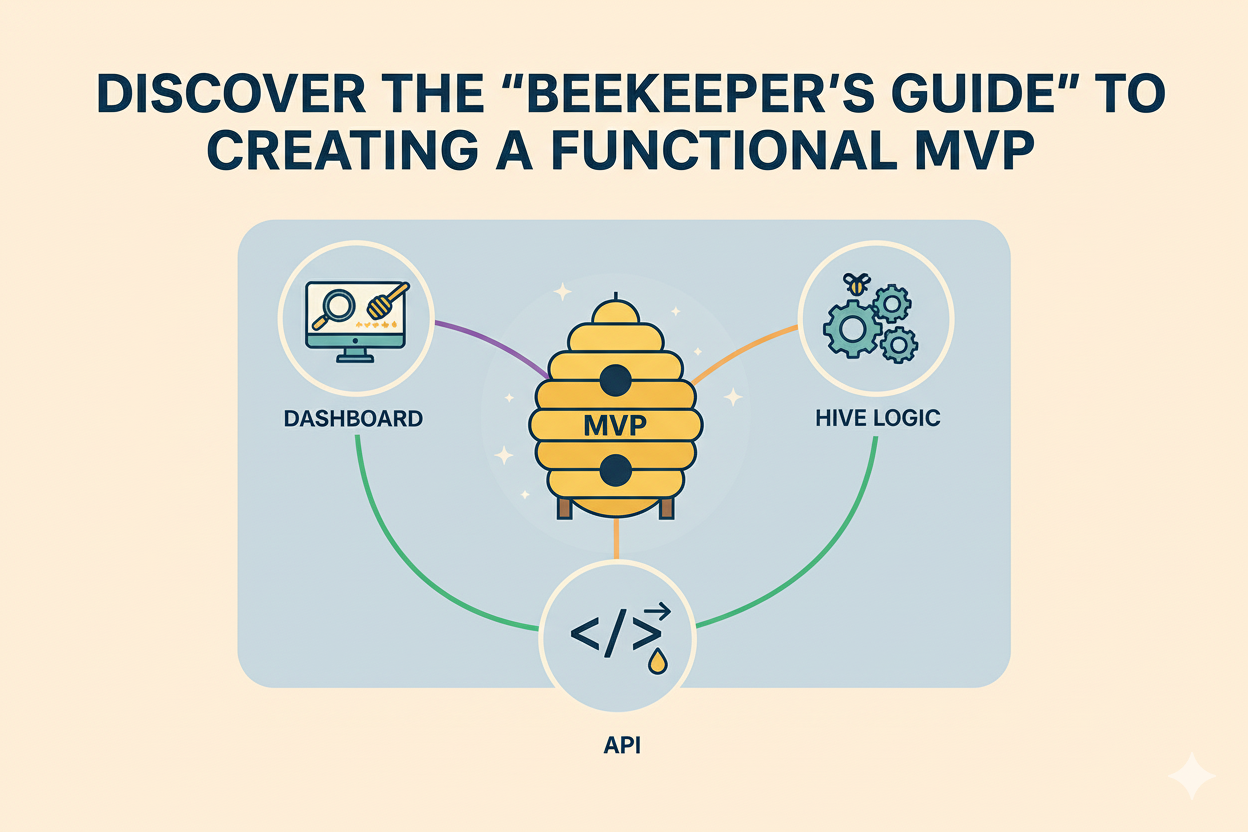
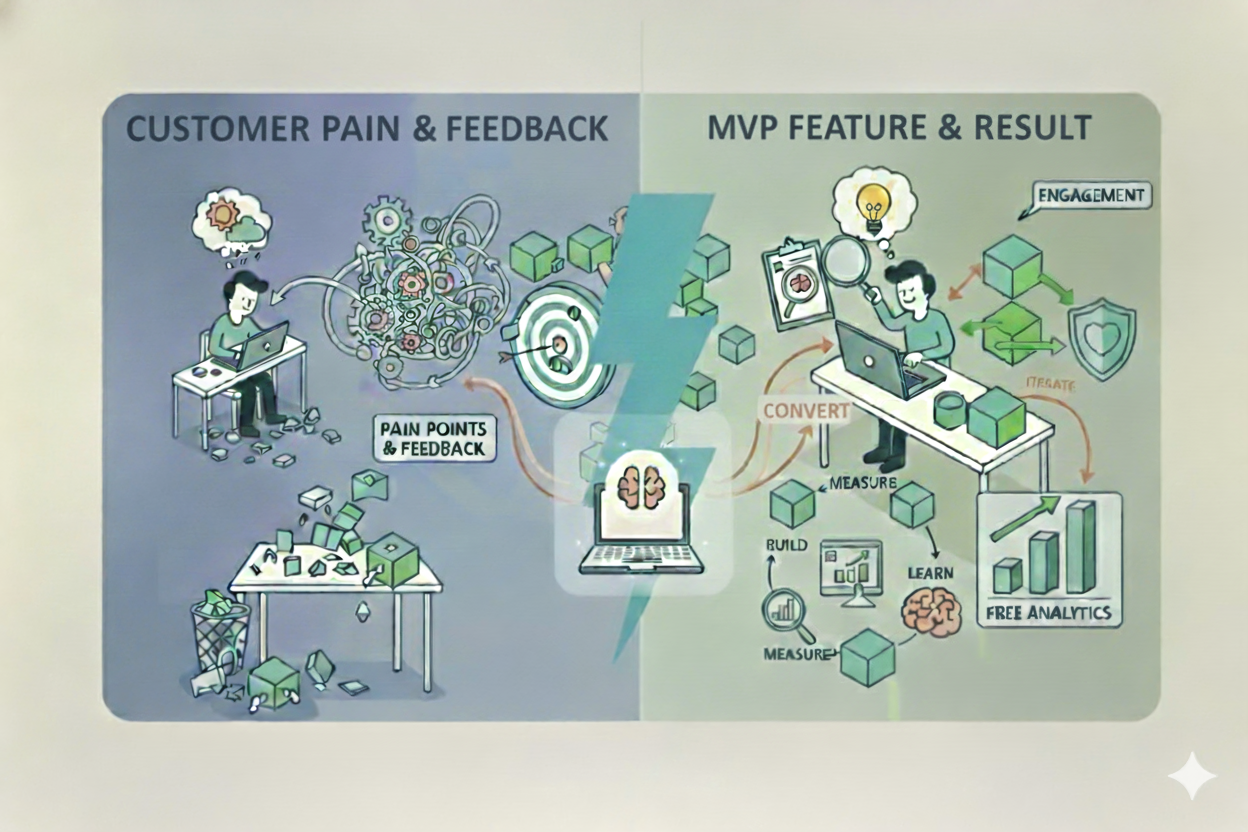
No comments yet
Be the first to share your thoughts on this article!